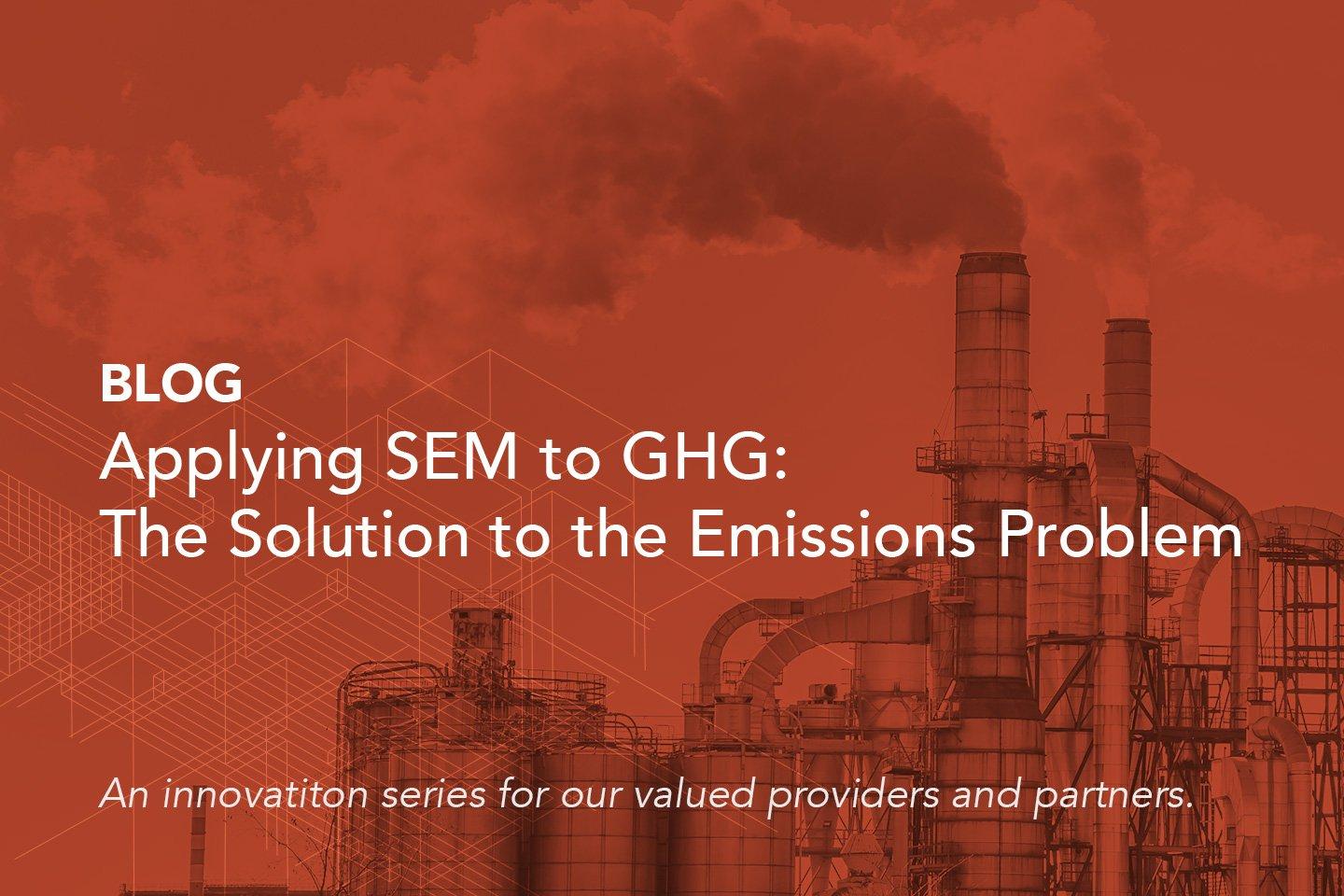Applying SEM to GHG: The Solution to the Emissions Problem

Across our industry, strategic energy management (SEM) is generally known for being a proven, long-term stratified approach to energy efficiency that includes setting goals, tracking progress, reporting metrics, and analyzing results. It’s a flexible, living program that can evolve with time and bend to fit precise energy needs. The program also provides critical training for staff, nurturing key skills in the workforce while driving up employee engagement and changing participating organizations’ culture around energy efficiency.
But did you know that, outside of generating significant energy savings, SEM can also help drive down greenhouse gas (GHG) emissions? This particular SEM use case has been getting more and more buzz lately, mostly due to policymakers’ renewed focus on regulating emissions from large producers such as utilities and energy companies in the US and Canada.
There’s no way around it — energy generation is the single largest contributor to greenhouse gas emissions around the world. Communities and governments are beginning to formally recognize this fact and, as climate-related issues become harder to ignore, attempting to confront it through new legislation and regulations.
Canada is the foremost leader on this front to-date. That’s why we knew the Government of Alberta would serve as an excellent test case for SEM’s role in reducing GHG emissions — since they're closest to the problem, they are also closest to the solution. Thus far, our results in Canada have been overwhelmingly positive, and strongly support our hypothesis that a robust SEM framework is a crucial component of bringing emissions under control and in-line with the latest rules and regulations. We’ve also seen promising results from a recent program with ConAgra in Arkansas. The details of both case studies were examined in our webinar, watch Applying SEM to GHG: The Solution to the Emissions Problem.
Public and private organizations across North America have committed to SEM in the past to change the way they use energy and save some money while they’re at it. And it remains the most cost-effective approach to energy savings on the market for non-residential organizations. Is it time to trust SEM as a reliable way to lower GHG emissions as well? Backed by our latest data, we think yes. Watch the full webinar..